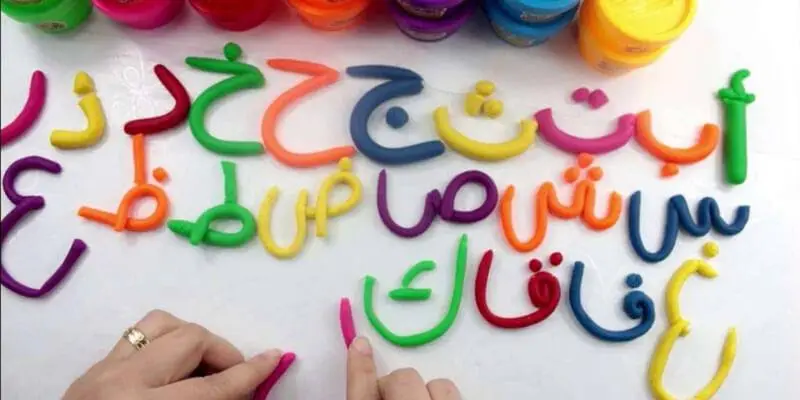Reading is a fundamental skill that opens doors to knowledge and understanding. When it comes to teaching a child to read Arabic, it is important to create a language-rich environment and use effective strategies to engage their interest. By following a structured approach that incorporates vocabulary building, phonics, reading comprehension, and fun activities, parents and educators can help children develop strong Arabic reading skills. In this article, we will explore various techniques and tips to guide you in teaching a child to read Arabic.
Teaching a child to learn the Arabic language is a rewarding journey that requires patience, dedication, and a well-planned approach. Arabic, as a complex language, offers unique challenges and opportunities for young learners. By employing effective teaching strategies and providing a supportive environment, parents and educators can pave the way for their child’s Arabic literacy success.
How to Teach a Child to Read Arabic

Reading Arabic opens the door to understanding the rich cultural heritage, literature, and religious texts of the Arab world. It allows children to connect with their heritage, communicate with family members, and deepen their appreciation of the Arabic language and culture, In this article on the Arabian tongue. website, we will share with you the most important Arabic Language Learning Tips, How to read Arabic for children.
Creating a Language-Rich Environment
To foster a love for Arabic reading, it is essential to surround the child with Arabic books and materials. Create a dedicated reading area at home and stock it with age-appropriate Arabic books, magazines, and newspapers. Additionally, encourage family members to speak Arabic with the child, reinforcing their exposure to the language.
Building Vocabulary
Building a strong Arabic vocabulary is a crucial step in teaching a child to read Arabic. Start by introducing essential Arabic words and phrases, focusing on everyday objects, colors, and numbers. Flashcards and visual aids can be used to make learning engaging and interactive. Incorporate Arabic into daily activities, such as labeling items around the house in Arabic or singing Arabic nursery rhymes.
Phonics and Letter Recognition

Teaching the Arabic Alphabet Fundamentals and letter sounds for reading. Introduce the letters gradually, starting with the most commonly used ones. Help the child practice letter formation through tracing activities. Utilize phonics games and activities that reinforce letter sounds and blending.
Reading Comprehension Skills
Developing strong reading comprehension skills is essential for understanding Arabic texts. Engage the child in Arabic storytelling sessions, encouraging them to listen attentively and ask questions. After reading, discuss the story together, focusing on key details, characters, and plot. Encourage the child to read aloud to enhance their fluency and expression.
Fun and Engaging Reading Activities

Make reading Arabic an enjoyable experience for the child by incorporating fun activities. Play Arabic word games like “I Spy” or “Word Hunt” to reinforce vocabulary. Utilize technology and language learning apps that offer interactive reading exercises and stories. Organize reading challenges and rewards to motivate the child and make their progress tangible.
Progress Monitoring and Support
Track the child’s reading skills and progress regularly. Celebrate their achievements and provide encouragement and positive reinforcement along the way. If your child shows resistance to learning Arabic, try to understand their concerns and find creative ways to address them. Seek additional resources and support, such as Arabic reading programs or Learn Arabic Online tutoring, to enhance their learning experience.
FAQs
How long does it take for a child to learn to read Arabic?
The time it takes for a child to learn to read Arabic varies depending on various factors, including their age, exposure to the language, and learning environment. With consistent practice and effective teaching methods, most children can develop basic reading skills within a few months to a year.
What if my child shows resistance to learning Arabic?
If your child shows resistance to learning Arabic, try to understand their concerns and find ways to make it more enjoyable and relatable for them. Incorporate their interests, use interactive learning materials, and seek support from Arabic language teachers or tutors who specialize in teaching children.
Are there any specific Arabic reading programs available?
Yes, there are several Arabic reading programs available, both online and offline, that cater to children's learning needs. These programs often include interactive lessons, reading materials, and progress tracking features. Research and choose a program that aligns with your child's age, skill level, and learning style.
How can I make reading Arabic enjoyable for my child?
Making reading Arabic enjoyable for your child involves incorporating fun activities, using engaging materials, and providing positive reinforcement. Create a cozy reading nook, introduce interactive games, and explore culturally relevant Arabic stories. Celebrate their progress and offer rewards to keep them motivated.
Is it better to learn Modern Standard Arabic or a specific dialect?
The choice between learning Modern Standard Arabic (MSA) or a specific dialect depends on your child's goals and needs. MSA is the formal Arabic language used in writing and formal communication, while dialects are spoken Arabic variants. It is beneficial for children to be exposed to both MSA and a dialect, as it allows them to communicate effectively and appreciate regional linguistic nuances.
Conclusion
Teaching a child to read Arabic requires patient and consistent effort. By creating a language-rich environment, building vocabulary, teaching phonics, and engaging in fun reading activities, parents and educators can help children develop a lifelong love for Arabic reading. Remember, each child learns at their own pace, so be supportive and celebrate their progress. Embrace the joy of watching your child unlock the beauty of Arabic literature and knowledge.


